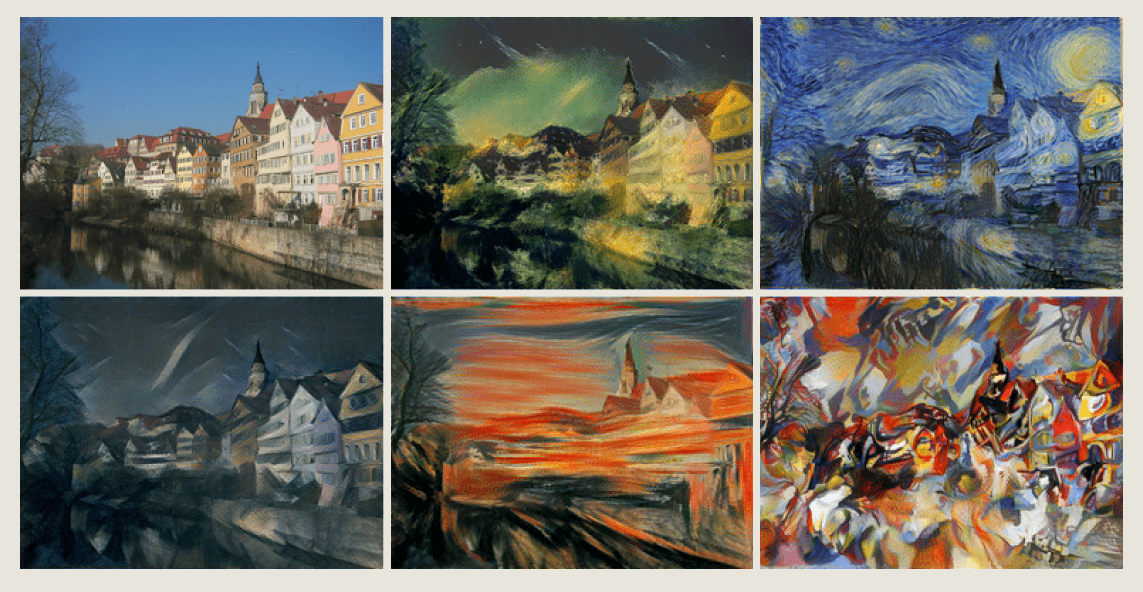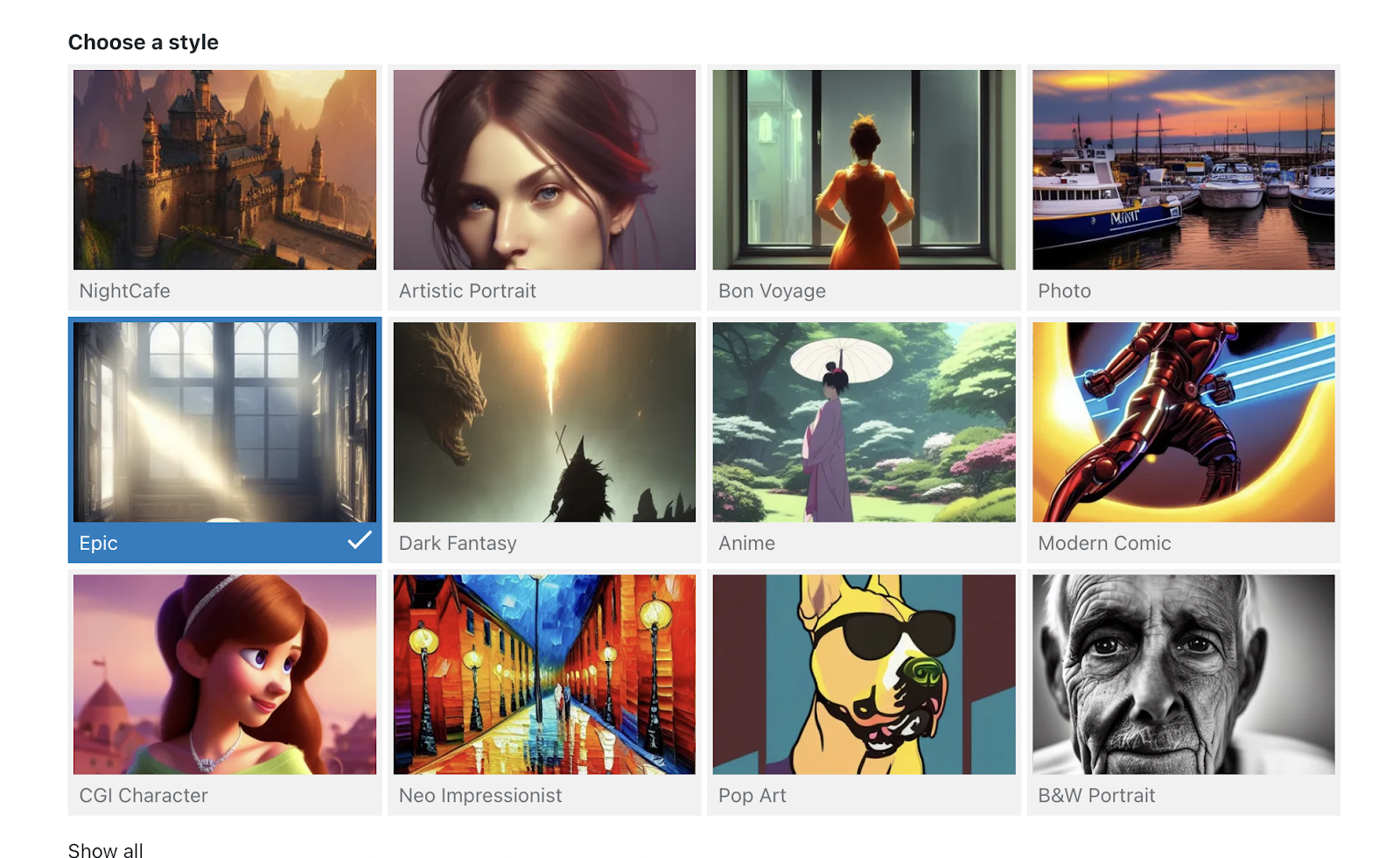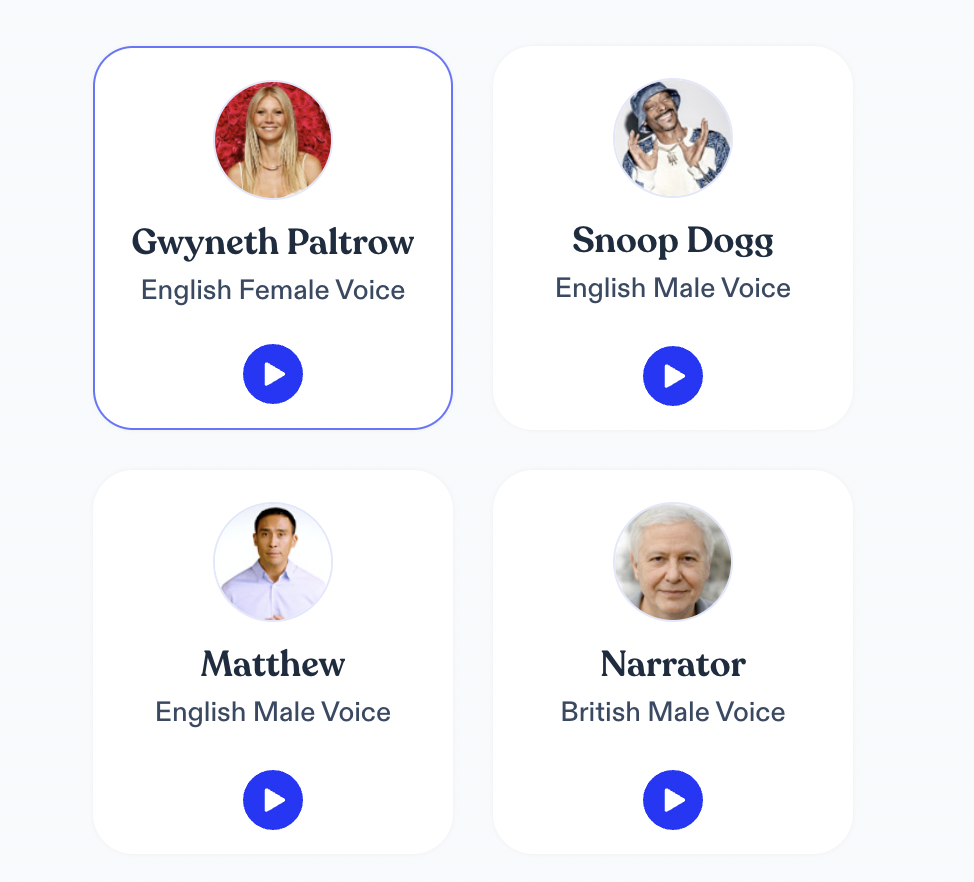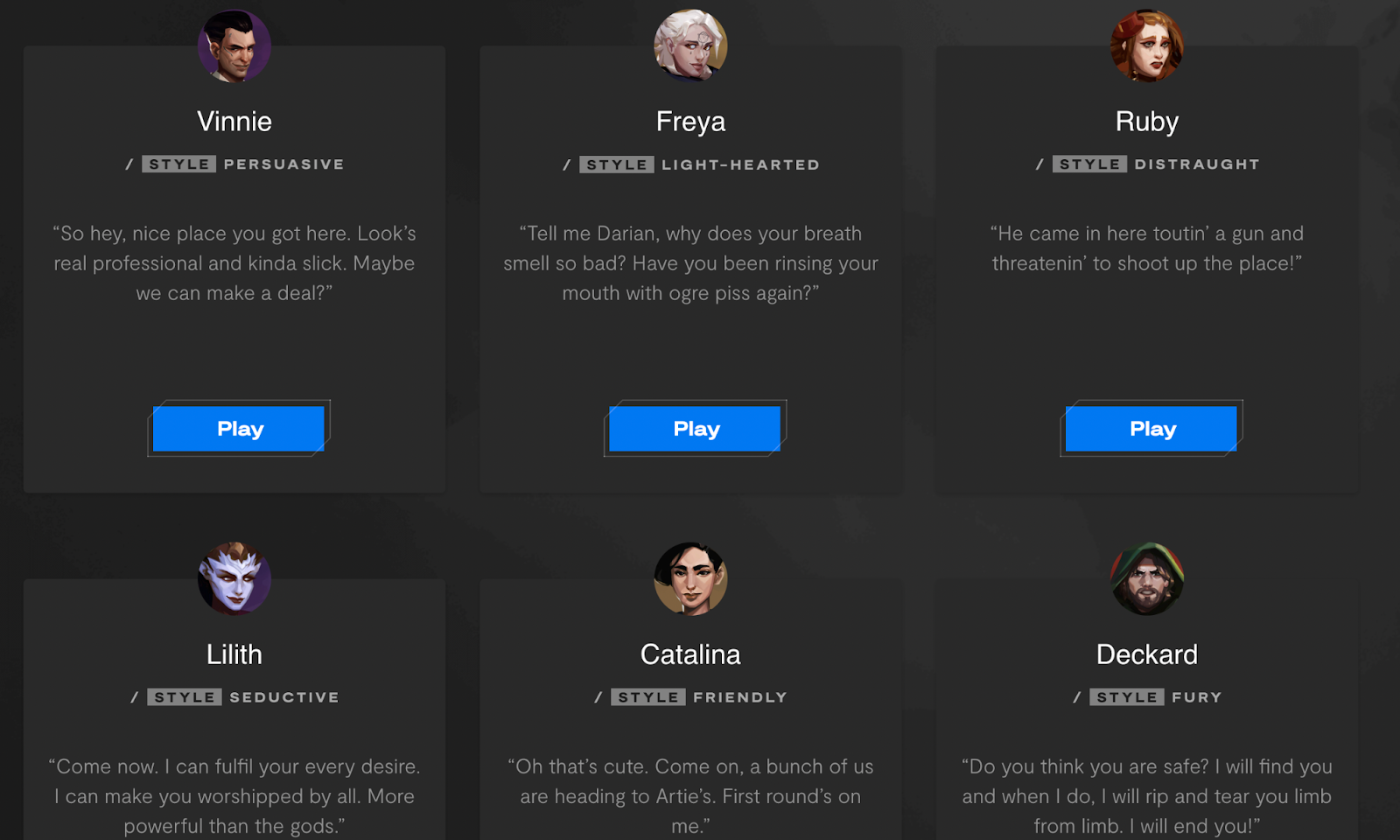Key takeaways
During the last few years, there’s been a lot of buzz around topics like the Metaverse, NFTs and cryptocurrency. The latest one everybody’s talking about? Generative AI.
The general consensus is that these technologies are quickly transforming our business landscape and will eventually impact almost every aspect of our daily lives. But is all the buzz warranted? Well, in the case of generative AI, it just might be. Imagine a world in which generative AI tools could be used to:
- Generate a draft of your next email, post or article based on keywords (try copy.ai)
- Dream up inspiring architectural designs (try Midjourney)
- Create illustrations for mood boards or pitch decks in minutes (try DALL·E 2)
- Discuss the theory of relativity with an AI version of Einstein (try Character.ai)
As you can see, we’re already living in that world. These tools are being used by people worldwide in a myriad of different ways, from entertainment to art creation to optimising their business operations. All in a fraction of the time and based on a few simple keywords. In fact, according to Sequoia Capital, it’s an industry with the potential to generate trillions of dollars in economic value, and its impact is going mainstream fast (many would argue it’s already there).
Generative AI startups have quickly become “the kid to hang with” among top venture capital firms, many raking in some pretty impressive funding in the last months:
- AI writing assistant, Jasper raised $ 125M and is now valued at $1,5B
- Open source AI startup, Stability AI raised $ 101M and is now valued at $1B
- Open source ML company, Hugging Face raised $ 100M and is now valued at $2B
- AI research company, Anthropic raised $ 580M earlier this year
It’s no surprise that tech giants like Meta, Microsoft and Google are investing heavily and leveraging the technology to enhance their own offerings. They’re even creating some new ones of their own.
So, ready to see what all the fuss is about? Let’s kick things off with some context.
What is “generative AI”, and how does it work?
Generative AI uses machine learning algorithms to turn existing data (e.g. text, video, images, even code) into new content. The technology enables computers to detect patterns in “input data” and use them to generate “output” that’s entirely unique and synthetically created.
The more the computer “trains” (i.e. learns based on the inputs provided), the higher the quality of the content it generates. That was the easy part. Now, let’s get into the more techy stuff.
Generative AI technology has more than one type of architecture, and we’ll take a look at the two most common ones below:
Generative Adversarial Networks (GANs)
The first wave of generative AI was based on the GAN approach, widely used in image, video and audio generation. It works using two distinct algorithms or “neural networks”:
- The “generative network” creates new data based on inputs. Its job is to get better at understanding input data sets and use them to generate similar examples.
- The “discriminator network” evaluates the output of the generative network (based on set parameters) and penalises it for producing unrealistic, low-quality results.
Eventually, the generator gets so good at creating outputs that it’s able to fool the discriminator (and delight humans with its realism).
Transformer-based
This is a newer approach, originally debuted in a 2017 paper from Google. Widely employed in tasks related to natural language processing (NLP), transformer-based models make use of deep neural networks to spot patterns and relationships in sequential data (e.g. code, sentences). While this architecture can tackle bigger datasets, training it (i.e. getting it to work properly) can cost millions of dollars.
Examples in this category include:
- OpenAI’s Generative Pre-trained Transformer (GPT-3)
- Google’s Language Model for Dialogue Applications (LaMDA)
- Wu Dao 2.0
Why is generative AI blowing up now?
Well, just a few years back, the technology was still basic compared to where it is today. Based mostly on small models, it could take on repetitive, analytical tasks (e.g. spam detection, delivery time prediction, etc.) - while exciting, it wasn’t really worthy of mainstream attention.
Here’s a quick timeline of how we got to where we are today:
2017
Google publishes its landmark “Attention is all you need” paper, describing the transformer-based architecture.
2020
Models get bigger and more developed. Standouts like GPT-3, can produce quick content, including copy and code.
2021
The industry goes to open beta, giving users and developers access. AI startups are raising record amounts in funding.
2022
It’s mainstream. Apps like Runway, Jasper and Mem are being used worldwide. Investors and tech giants are all in.
As you can see, we’ve come a long way quite fast, with bigger models, advanced architectures, access to more data and more processing power than ever. The result? Generative AI applications have gone from repetitive, analytical tasks to creative ones. A quote from a recent Sequoia article reads:
“Generative AI is well on the way to becoming not just faster and cheaper, but better in some cases than what humans create by hand. Every industry that requires humans to create original work—from social media to gaming, advertising to architecture, coding to graphic design, product design to law, marketing to sales—is up for reinvention.”
In other words, thanks to the advances in generative AI, computers can now write copy, tell stories, produce images and create code with minimal human input (except for, say, typing in a few keywords). That’s enough to grab anyone’s attention.
What are the applications of generative AI?
Here are just a few of the most widely used applications for generative AI:
Making designs and images
For a while now, artists have been using generative AI capabilities to “fill in the blanks” or refine visual content. For example, AI plug-ins for Photoshop can be used to add generative effects to pictures or create new versions based on an original. Canva is another example of a tool that works with AI-generated images to enhance designs.
Web apps like DALL-E, DeepAI and NightCafe take things to the next level by enabling users to create almost any image that comes to mind in seconds and based on a few keywords. The image below took about a minute to create.

These apps can be quite fun to use, and the possibilities for creative imagery are basically endless. Here are a few other nifty things you can do with them:
- Style transfer - enables you to re-create or create an image “in the style of” almost any artist.

- Sketch-to-realistic image - enables you to create photolike images from simple sketches.

You can even achieve different aesthetic effects using prompts like “oil painting”, “cartoon”, “cyberpunk”, or “pop art” (just to name a few).

Creating copy
Tools like Copy.ai, Writesonic, Peppertype and Jasper are already capable of producing blog articles, social media posts, and email content. Other cool copywriting tools include:
- MarketMuse provides AI-powered insights to make your marketing more competitive.
- Frase IO can produce slogans, summaries, articles and product descriptions.
- Rytr can produce SEO-optimised blog posts, e-mails, and social media ads.
In most cases, these tools can provide a nice first draft on which you can build. For example, here’s a snippet of what this article would have looked like if it were written by Copy.ai:

One could argue that you don’t need to be trained in “basket making” to put together a mean gift basket (particularly if you really know your recipient), but the copy isn’t badly written and with a few tweaks, it could be turned into an informative piece of content.
As the models continue to train, they’ll get better at producing higher-quality content, eventually reaching the capability to produce entire novels based on a few prompts.
Writing code
Tools like kite can help programmers work faster using autocomplete-like capabilities. Other tools like GitHub CoPilot can turn natural language prompts into coding suggestions, making it more accessible to non-developers. Other examples include:
- DeepCode, which can make suggestions to improve code.
- Embold can detect issues with the code and recommend solutions.
- Pylint can analyse Python code, find errors, and enforce a coding standard.
Making and editing videos
Generative AI technology can translate text to video in a matter of minutes. Tools like Synthesia provide video templates (e.g. how-to, sales pitch, learning and development, etc.) along with human-looking avatars to star in them. You can choose your avatar’s voice, the script and even insert background music into your videos (the quality is frighteningly realistic!). Check out the company’s demo video below to get an idea of what an AI-generated video could look like.
Other tools in this category include:
- Lumen5 enables you to make original videos to fuel your marketing efforts.
- Elai enables users to turn articles into videos and produces customised avatars.
- Runway offers AI-powered text-to-video editing along with other content services.
These AI-generated videos can be used in a variety of areas, including education, marketing, and social media.
Generating AI voices and music
Generative AI tools also make it possible to turn text into computer-generated voices that sound pretty human (though, in some instances, you’ll still be able to spot the difference). Tools like Speechify, for example, can read to you in the voice of Snoop Dogg, Gwyneth Paltrow and other non-celebrity computer-generated voices.

Replica is another example, offering a variety of both male and female AI voice actors with different accents and emotions to suit different scenarios.

Then, of course, there’s AI-generated music. Tools like AIVA, Soundraw, and Evoke can generate songs based on moods, genres and styles. Some even give the creator the copyright.
These tools are making music creation accessible to a wider array of people (even those with no previous experience) and can be used in a variety of ways, including gaming, soundtracks, marketing and just plain fun.
The applications mentioned above are just the tip of the iceberg. Emerging areas of interest include healthcare:
- Using generative AI to create CT images based on MRIs
- Combining the technology with 3D printing to make prosthetic limbs
- Using generative molecular design in drug discovery
How will generative AI impact the future?
According to a report by Gartner, generative AI will be producing around 10% of our data by 2025. That same year, generative AI will be used in:
- 30% of marketing messages from corporates
- 90% of the material in quarterly reports
- 50% of drug development initiatives
- 20% of all test customer data
By 2026, it will create 50% of the code for new websites and mobile apps and automate 60% of the design process involved. A year later, about 30% of manufacturers are expected to be using generative AI to increase efficiency.
This chart by Sequoia attempts to map out the progress of generative AI from 2020 to 2030, and it seems pretty in line with some of the predictions above:

What are the challenges of generative AI?
Like most disruptive technologies, generative AI does come with a few challenges, here are just a few:
1. A double edge sword for the creative labour force
As they are today, generative AI tools are the perfect assistants for designers, coders, writers and marketers, increasing speed, providing inspiration and boosting productivity. However, as explained by Michael Dempsey, Managing Partner at Compound VC:
“It turns out, machine-learning models are probably going to start being orders of magnitude better and faster and cheaper than that person…”
If this prediction comes true, it could eventually end up displacing thousands of creatives in different industries.
2. Issues around originality, copywriting, and ownership
Recently, an AI-generated piece of art was awarded first prize at a Colorado State Fair, leaving artists online in an uproar. Similar issues arise when an artist’s “style” is used to generate new pieces. For example, if you create an image in the style of Kandinsky, is there a copyright issue? What about artwork depicting marvel superheroes or Disney characters?
This type of dilemma will become more ubiquitous as the use of generated content becomes more common.
3. Misinformation and deep fakes
As AI tools improve, it’s going to get harder to tell fake videos, recordings and pictures from real ones. For example, a while back, a slowed-down video of U.S. House Speaker Nancy Pelosi went viral, because it sounded like she was slurring her words (spoiler alert: she wasn’t).
Deep fakes like these can damage a person’s career and spread dangerous misinformation if not properly managed.
4. Training bias
Generative AI models trained on vast amounts of data have been shown to end up with biases related to gender, race or culture. As explained by Clement Delangue, CEO of Hugging Face:
“What we’re seeing with these models is one of the short-term and existing challenges is that because they’re probabilistic models, trained on large datasets, they tend to encode a lot of biases..”
As described in a recent CNBC article, he then shows an AI-generated depiction of a “software engineer” as a caucasian male. Another example happened in 2014 when Amazon used an AI recruiting tool to review resumes. The model was trained using historical data from the previous ten years, in which the tech workforce was primarily male. Based on the data, the model incorrectly assumed that male candidates were preferable, penalising resumes from women.
Final thoughts
Generative AI is a rapidly growing market, ripe with opportunities and applications in almost every industry. Is all the buzz warranted? We think so. The impact might just be akin to that of the internet in the 90s or the arrival of the iPhone in 2007 - completely transforming our landscape and bringing with it unlimited opportunities for entrepreneurship and innovation.
_______
Would you like to diversify your portfolio by exploring new value spaces? We can help you leverage your company’s unique corporate assets to reach your growth goals and prepare your company for the business landscape of tomorrow.
Discover the 7 venturing arm strategies
An analysis of the top corporate venturing portfolios








